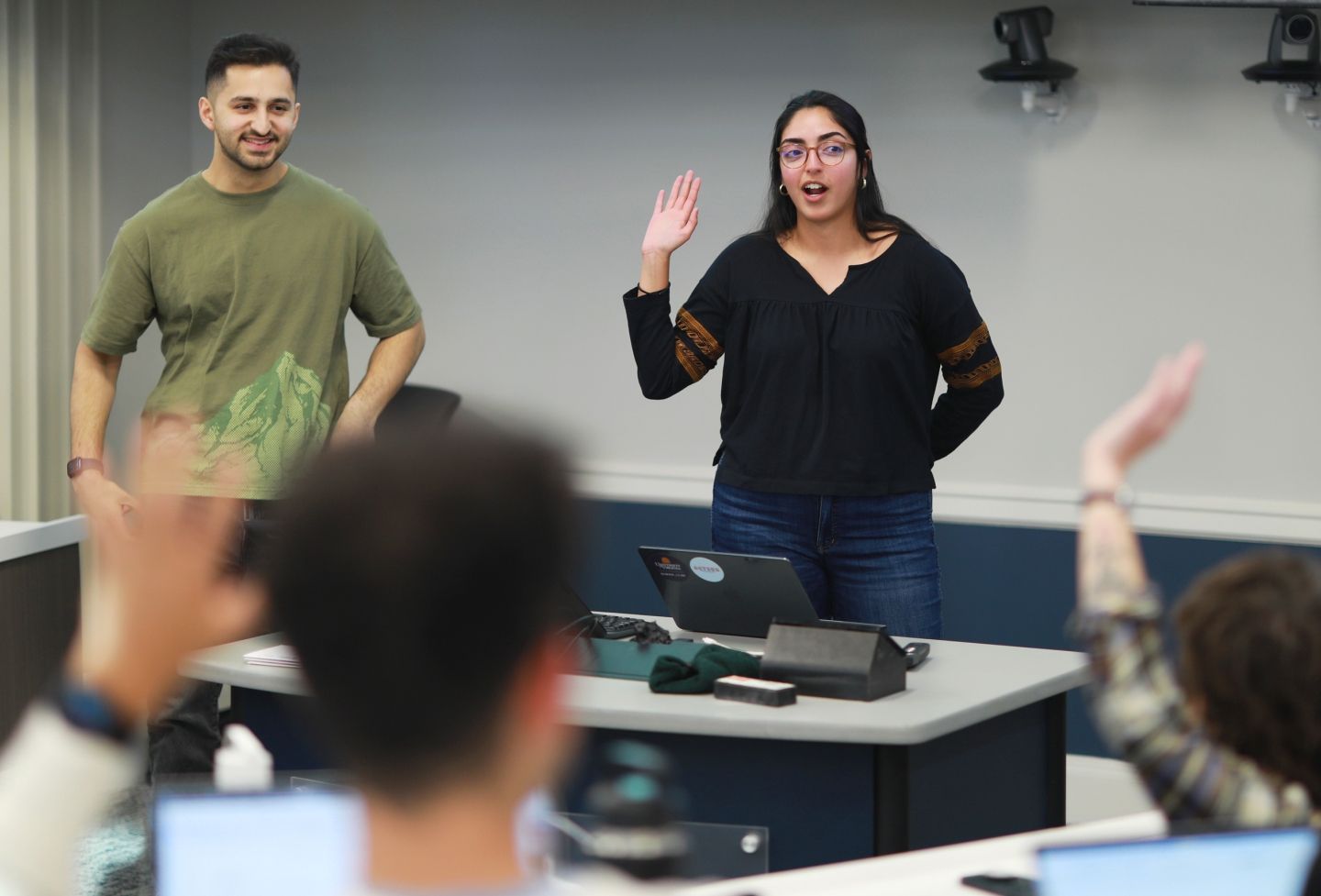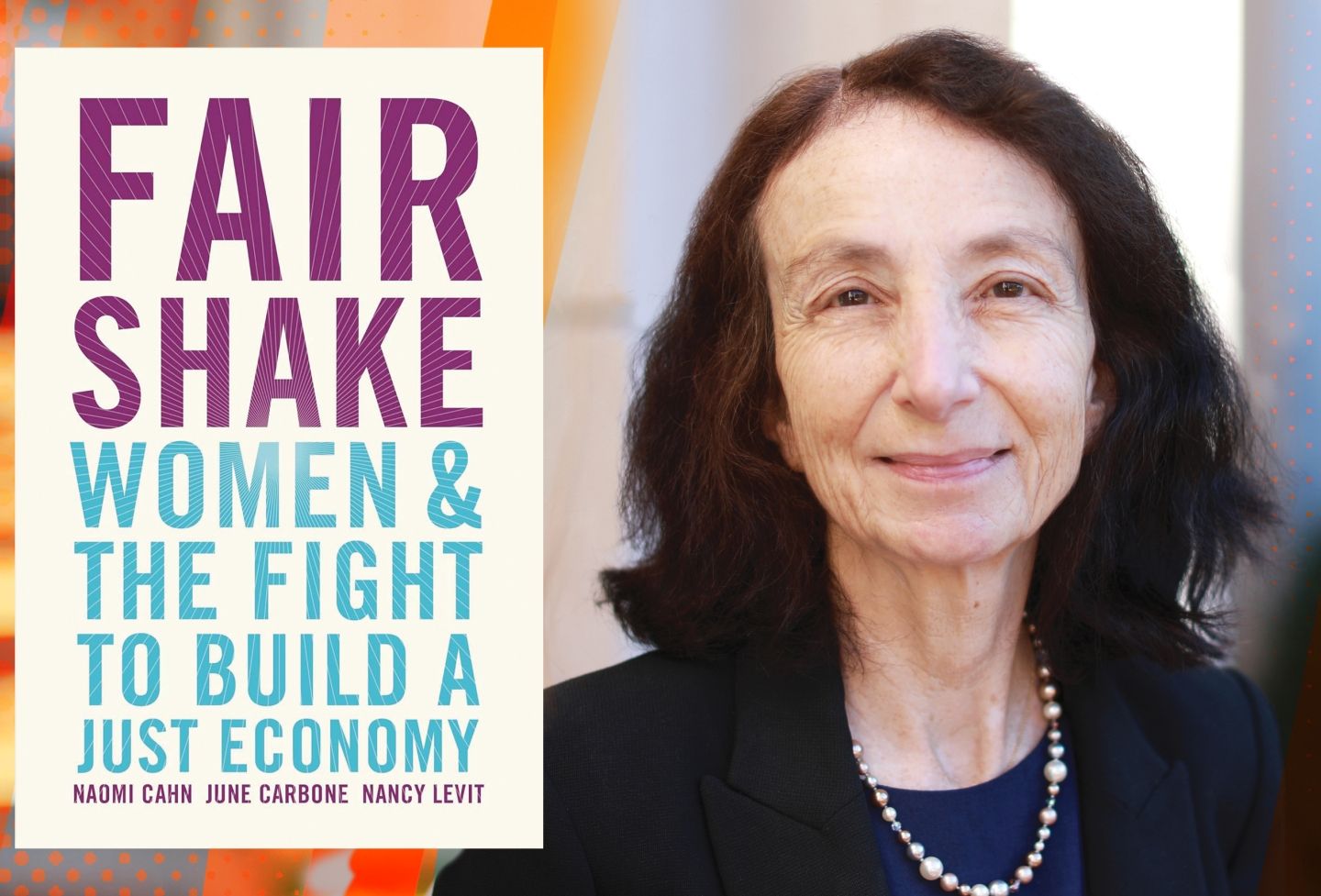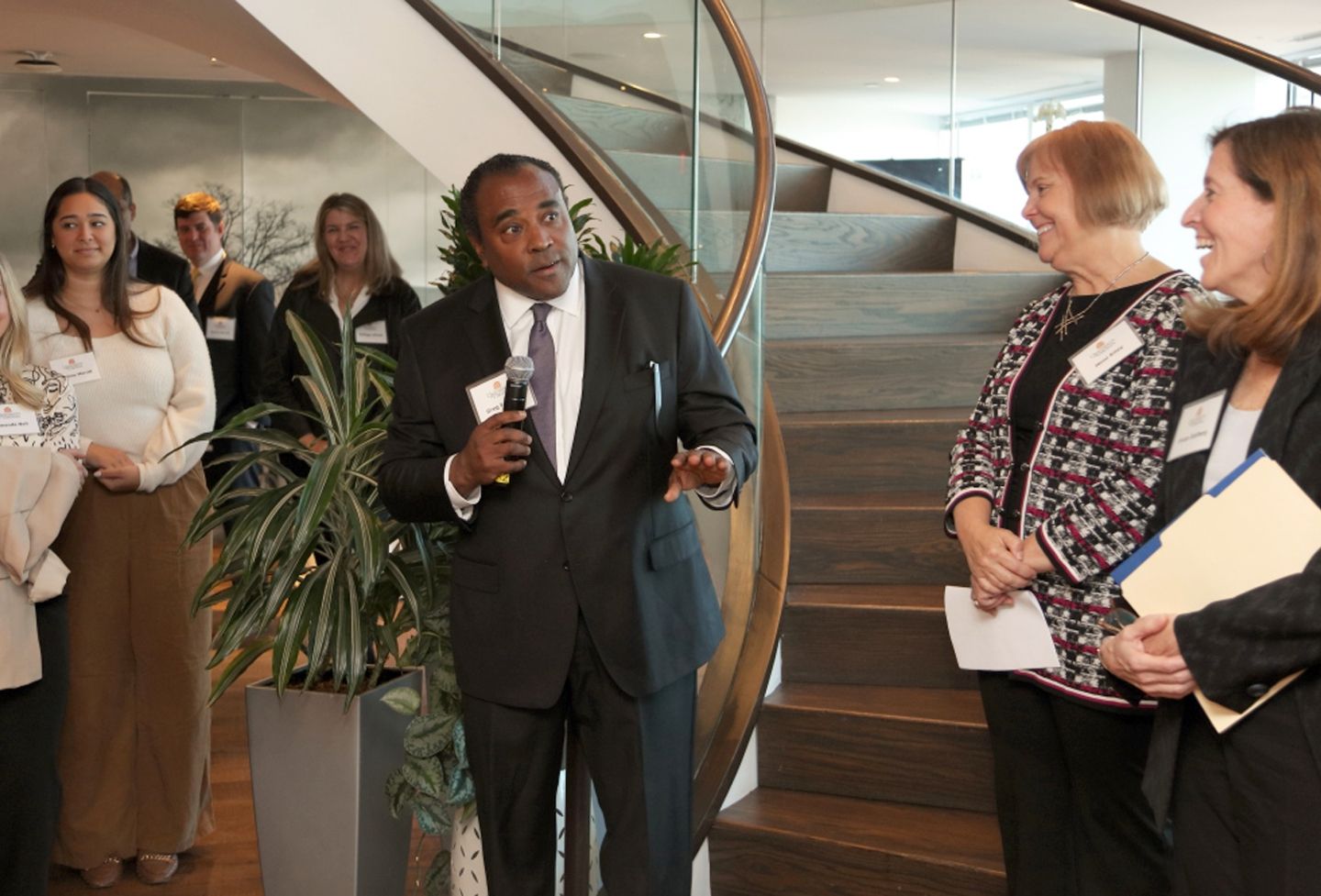Before a packed crowd of students and faculty in Caplin Pavilion, a panel of three University of Virginia law professors explained the most important Supreme Court decisions of the 2011-12 term, including cases involving the federal health care law and Arizona's immigration statute.
At the annual Supreme Court Roundup — which is sponsored by the Student Legal Forum — Professor A. E. Dick Howard gave an overview of the term while Professor Kerry Abrams analyzed the Arizona immigration law case and Professor Margaret Foster Riley broke down the health care decision and its implications.
The past term, Howard said, was marked by several notable exceptions to the conventional wisdom about the court under Chief Justice John Roberts.
While the Roberts Court is correctly viewed as "distinctly conservative," he said, the court's liberal wing chalked up victories in some of the term's highest-profile cases. For example, the court struck down mandatory life sentences without the possibility of parole for juvenile murderers, it struck down most of Arizona's tough anti-immigration law, and it upheld the centerpiece of President Barack Obama's health care reform.
"Cases like [these] remind you that any general trend to the right in the Roberts Court is open to exceptions in individual cases," he said.
Perhaps the biggest surprise of the term was Roberts' decision to side with the court's liberal wing to uphold the individual mandate portion of the Affordable Care Act in National Federation of Independent Business v. Sebelius.
"Some people were puzzled," Howard said. "One of the theories was that he was acting as a statesman — that he was thinking institutionally and worried that if the court were to move to strike down the health care law, the court would be indicted as being partisan."
Prior to the health care decision, Howard noted, Roberts joined the liberal justices in a 5-4 decision only twice in seven years.
Many conservatives — including, apparently, other Supreme Court justices — were outraged by Roberts' decision. Yet Howard believes the backlash is overblown.
"If there was some unhappiness, it will pass," he said. "And I'm certainly not prepared to predict that we have discovered John Roberts is a liberal after all."
Another interesting justice on the Roberts Court continues to be Anthony Kennedy, Howard said. Kennedy voted with the majority 93 percent of the time during the most recent term — more than any other member of the court.
"If you're a petitioner in the Supreme Court and you're writing briefs, you don't want to quite say, in bold letters, 'Kennedy, this is for you.' But you're going to have him in mind when you frame your argument," he said.
The most frequent dissenters of the term were Antonin Scalia and Stephen Breyer. Howard noted that Scalia read from the bench a particularly strong dissent in a case that extended the Sixth Amendment right to counsel to defendants in plea bargaining.
Justice Samuel Alito is increasingly one of the more interesting justices on the court, Howard said, as he highlighted Alito's thinking in a ruling that police need a warrant before attaching a GPS device to a suspect's car.
"In that case, he wrote a concurring opinion that would lead me to think he might be the justice on the court most sensitive to privacy concerns," Howard said.
On the liberal side of the court, Howard said, Justices Elena Kagan and Sonia Sotomayor agree with each other at a very high rate, have proven that they have "powerful minds," and have earned the respect of the other justices.
"It may be that in time Sotomayor and Kagan will become the William Brennan and Thurgood Marshall of the Roberts court. The court has lacked that sort of strong leadership on the left side," he said. "Watch those two justices in particular."
Howard pointed out a few key trends that he saw continue over the most recent term. One of these is that the court is decidedly pro-business.
"In the most recent term, there were something like 25 cases where business interests were clearly in play," he said. "And the business interests seem to have prevailed in 19 out of the 25 cases. That's pretty lopsided."
Even more, he added, the court's majority sided with the U.S. Chamber of Commerce on every issue which the chamber briefed and the court addressed.
Arizona v. United States
The federal government's challenge of Arizona's anti-immigration law, known as SB 1070, centered on four provisions, Abrams explained.
Specifically, the federal government sought to block parts of the law that:
Made it a state crime for an immigrant to fail to register with the federal government.
Made it a crime for an unauthorized immigrant to seek employment or hold a job.
Authorized police to arrest anyone without a warrant if the officer suspects someone of having committed a crime that would make them "deportable."
Required police to investigate the immigration status of anyone they had already stopped, detained or arrested if they have a reasonable suspicion that the person is in the United States illegally. This section also required police to determine the immigration status of anyone arrested before the person can be released.
The court upheld a 9th U.S. Circuit Court of Appeals decision and blocked the first three parts of the law, but refused to block the so-called "papers please" provision.
The Supreme Court struck down the "failure to register" part of the law because the federal government "occupies the field" of alien registration schemes, Abrams said. The court also found that Arizona's law conflicted with federal immigration enforcement because it had stiffer penalties for noncompliance than the federal government imposes.
The court found that the Arizona law's employment provision conflicted with federal law too, Abrams said. Federal law can impose penalties — such as deportation or the inability to adjust status — on unauthorized immigrant employees, but not criminal penalties.
In striking down the "warrantless arrest" provision, Abrams explained, the court invoked the idea of federal sovereignty.
"The United States is the sovereign in question and the United States gets to create its own deportation policy," she said. "If Arizona is allowed to jump the line and put some people at the front of the line to get deported or to even be considered for deportation, that's getting in the way of federal enforcement."
Although the Court left the "papers please" part of the law standing, Abrams said, it did so only because Arizona might choose to enforce it in a narrow way that it would not conflict with federal immigration law. For example, Arizona might choose to interpret the law as requiring police officers to investigate the immigration status of anyone they arrest, but not as allowing them to detain the person longer than it takes to investigate a crime, even if the suspect's immigration status cannot be determined during the investigation.
Since the law was enjoined by the district court, it never went into effect, and the Supreme Court did not know how Arizona would interpret it in practice, she said. Now, she added, all eyes are on Arizona to see how it actually enforces its statue.
"The ACLU has a hotline [and] the U.S. Department of Justice has a hotline where people are supposed to call in if they think it is being enforced in a discriminatory manner or contrary to the outlines that the Supreme Court has given here," she said. "So [the court's ruling] may give Arizona some of what it hoped for in assisting immigration enforcement, but it's not nearly as much as what it could have been."
National Federation of Independent Business v. Sebelius
In the health care decision, Roberts led the court's majority in upholding the individual mandate, finding that its penalties constitute a tax under the Constitution's taxing clause. Five justices — although not as a block — voted to strike down the mandate under the commerce clause.
Seven justices ruled that the financial terms of the law's Medicaid expansion were too coercive for the states, but five of the justices found that the financial terms were "severable" and therefore saved the provision for the future, she said.
"Only Chief Justice Roberts was in the majority for all major parts of the opinion," she said.
The majority opinion was "curious," she added, pointing out that it holds the mandate is a tax but also that it is not a tax when considering whether the court could rule on its constitutionality before the penalties go into effect.
"The key part of Roberts' opinion is where he quotes Justice Story [in] somewhat archaic language," she said. "'No court ought, unless the terms of an act rendered it unavoidable, to give a construction to it which should involve a violation, however unintentional, of the Constitution.'"
Story's notion, she said, allowed Roberts to make an inconsistent ruling.
"He can apply a textual reading of the Anti-Injunction Act and find that it's a penalty," she said. "But then he can turn around and look at the individual mandate itself and read it in such a way that may not be what its intended reading was or even what its best reading is — as long as it's a possible reading, it's a tax and it's constitutional."
While the health care ruling was a clear victory for the Obama administration, it was not an overall liberal victory, she said.
"The court's decision in Sebelius is actually a move to greatly restrict Congress' powers — spending powers, commerce powers," she said.
Looking ahead, she added, the fate of the health care law will hinge on November's election.
"If Romney wins the election, certainly the mandate goes, certainly [the] Medicaid [expansion] goes, some of the other pieces will be retained. Who knows what will happen with Medicare because Medicare is a hot potato," she said. "If Obama wins the election, everything's supposed to go into force in 2014. I have no doubt that there will be additional lawsuits as we progress through with it."
Founded in 1819, the University of Virginia School of Law is the second-oldest continuously operating law school in the nation. Consistently ranked among the top law schools, Virginia is a world-renowned training ground for distinguished lawyers and public servants, instilling in them a commitment to leadership, integrity and community service.


